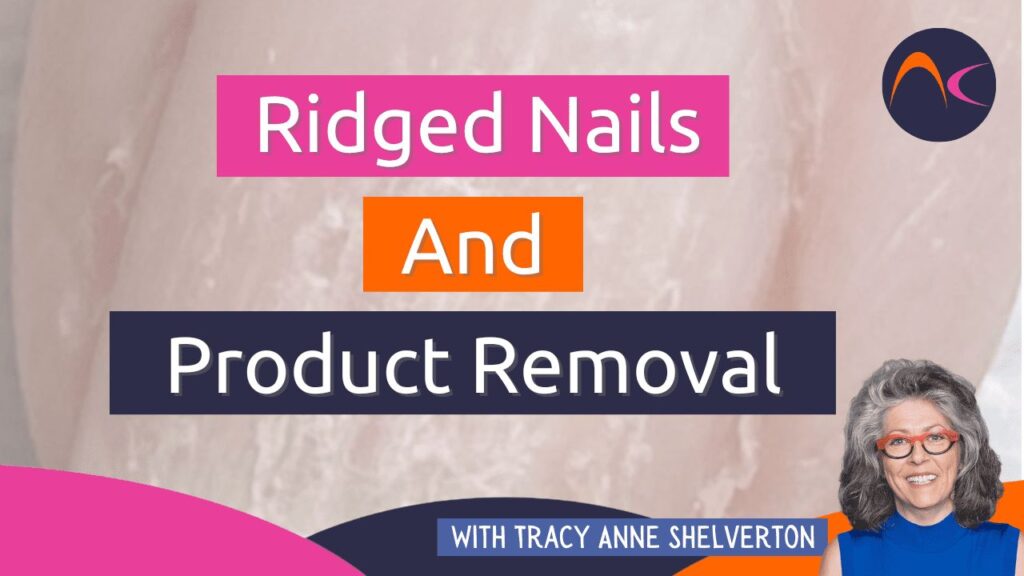Recently we spoke about nail porosity and ridged nails. So the question arose: what kind of problems might we have with product removal from ridged nails? A ridged nail per definition has a surface problem, let’s have a look at some of those problems.
Unintentional nail plate damage
- When we soak off nail coatings, we use a wooden stick or a cuticle pusher to remove the last bits of product.
- The nail plate is softer after we remove the nail wraps, so we should take great care to not unintendedly damage the nail plate further.
- The slightest pressure can cause surface damage that can cause even more problems in the future.
- Use the soak-off liquid for the allocated time and reapply if need be.
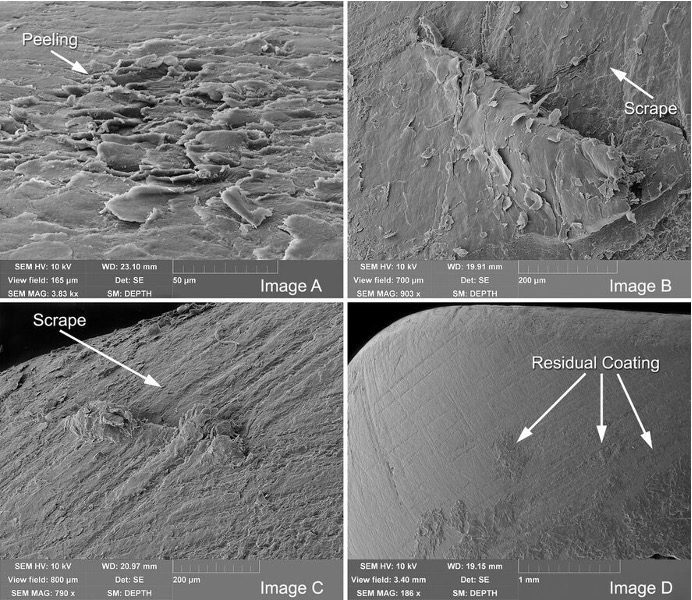
Open beaded ridges
- If we look closely at a nail plate with open beaded ridges, we can see that the base coat of our product will seep between the upper layers of the nail plate.
- When we come to remove it by soaking off some of the product will remain on the nail plate, when we scrape this away with our cuticle pusher, we will rip open the upper surface of the nail plate and cause even more damage.
- If we file the product off with a hand file or e-file, we will also rip open the upper layers of the nail plate causing extra problems the next time.
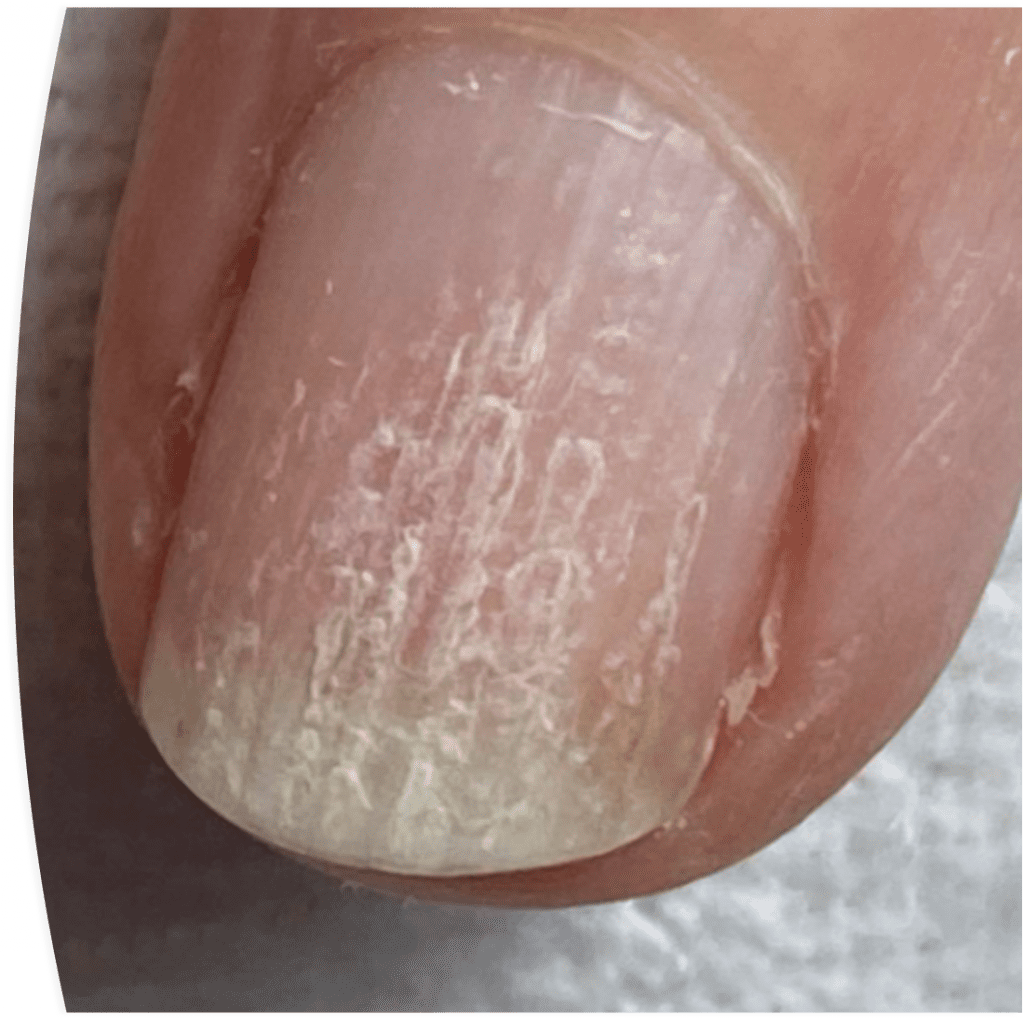
Nail plate damage
- If we repair the nail plate surface first, we won’t cause more damage.
- There are products on the nail plate that can repair the upper layers of the nail plate before product application.
- If you don’t have IBX you can use a product that is made to remain on the nail plate for longer than 14 days – maybe an Acrygel.
- Be very careful to note the condition of your client’s nails and advise them on the importance of nail plate maintenance with a good quality nail oil.
- Remember when you do a rebalance that your client had ridges – don’t file them away!
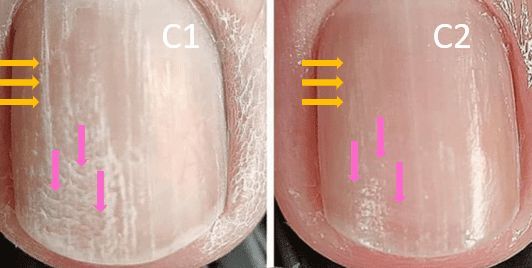
Just beaded ridges
The other problem that we might see is that white superficial onychomycosis has developed.
This is a surface nail plate fungi, that needs to be treated with an antifungal product & oil before you apply any other products.
Some clients are more likely to develop WSO than others, it’s a part of their own resident microbiomes – you may get lucky, but you may also see this result.
We can see that the client took care of her nail units with oil & lotion the proximal nail fold and lateral nail folds are in great condition and still, she has developed WSO.
Again, IBX in the nail plate will reduce the chances of WSO.
In the case of this client, we recovered the nail plates with an anti-fungal product, applied IBX and used acryl as the base for her nail coatings with a primer as per the manufacturer’s instructions.
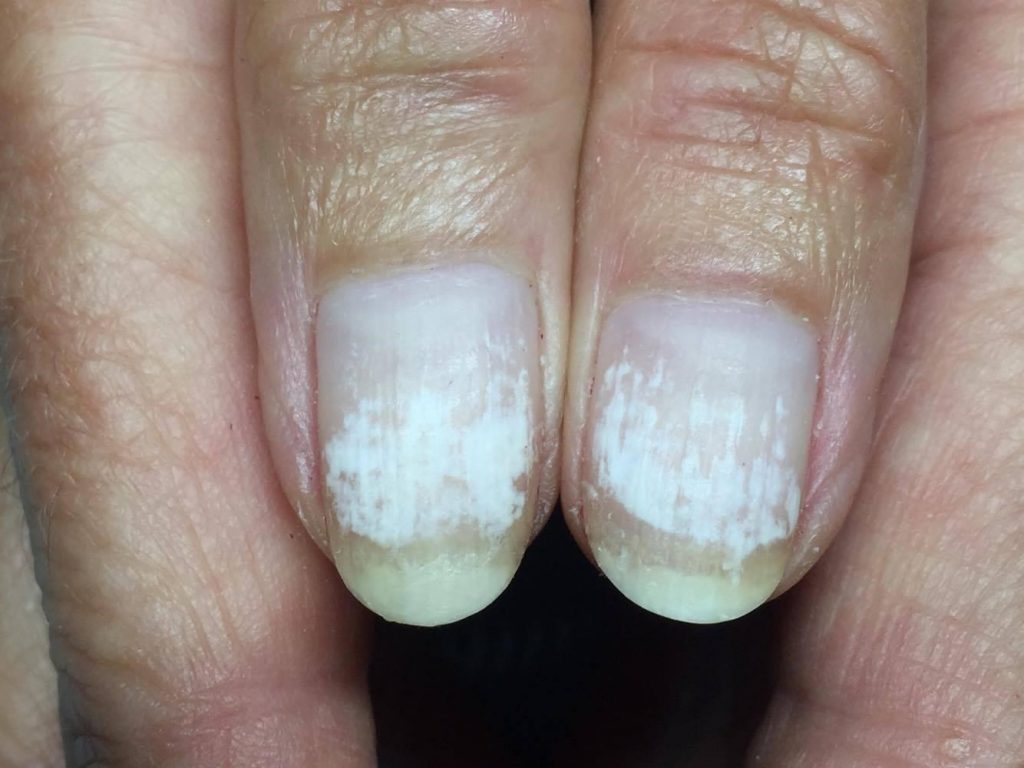
Pseudomonas Aeruginosa
- The other problem that we might see is that pseudomonas aeruginosa found its way into the nail plate.
- Pseudomonas Aeruginosa is a bacteria that we carry with us in our resident microbiome.
- If it’s warm and the client has her hands in water a lot or does not maintain her nail coating with oil – we create the perfect environment under gel polish for PA to develop.
- Recovering these nail plates took us 8 weeks!
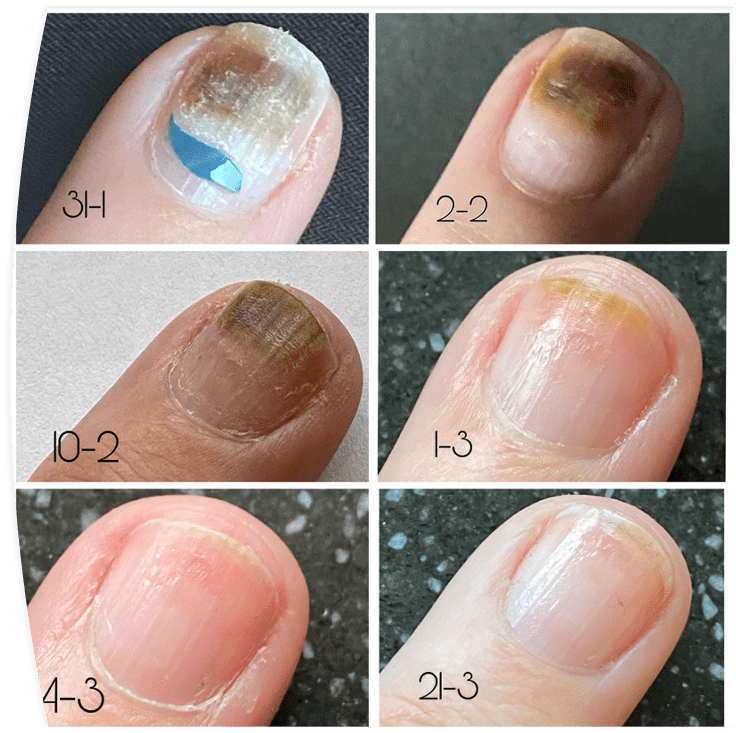
Of course, these problems can happen not only to ridged nails after product removal but to healthy, smooth nails as well. It is just that ridged nails are more susceptible.

